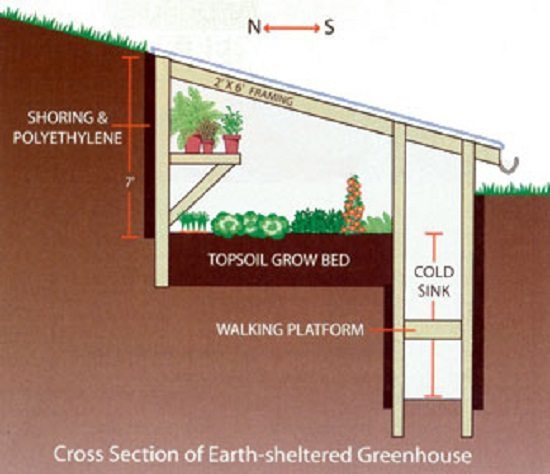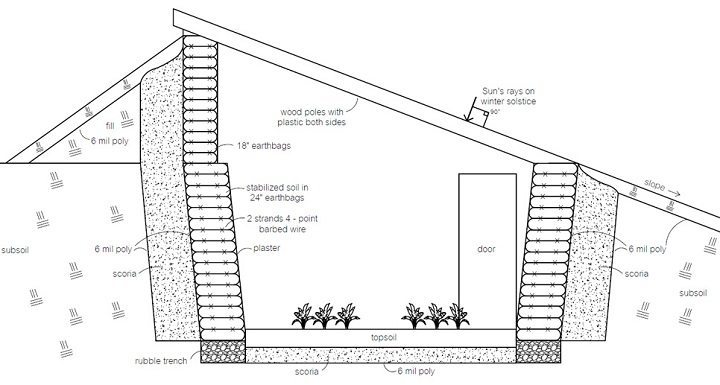Ever heard of a walipini greenhouse? It’s a very simple design for a greenhouse. Its underground with translucent roofing that allows sunshine in. This creates an underground greenhouse that utilizes the earth’s natural temperature to keep plants cooler in the summer and warmer in the winter.
The support walls of a walipini are typically built from stone, mud brick, or any other material that is strong and sturdy and can also retain heat in the winter and coolness in the summer. One way to create a greenhouse like this is to dig a hole into the side of a hill. This gives you a “ground level” entry into your underground greenhouse. Much like a walk out basement in a house.
More from the Guru: Grow Food Year Round in a $300 Underground Greenhouse
If you do not have a hill that allows for walk-in entry to your green house, you will have to build stairs or a ladder into your design. Also, its important to note that you do not have to dig a hole this deep into the ground to receive the benefits of digging deeper before gardening. Just a few feet will provide insulation and water retention for the plants you are growing.
Taking it a step further, some walpini greenhouse creators dig a trench on the south side of the greenhouse which allows cool air to drop in and be warmed by the deeper and hotter earth.
The idea that you can heat and cool areas based on the physical design of the space is quite mind boggling, honestly. Catherine Bleish did a tour of Raven Rocks Eco Village in Ohio, and they are building a huge earthen retreat center building that is able to maintain decent temperatures year round because of this type of architectural design. Check out the video tour here:
The positioning of your roof is important, especially in areas with long cold winters. You want the roof of your walipini greenhouse to be at a 90 degree angle to the suns rays on the shortest day of the year, the winter solstice. This way your greenhouse can most efficiently store heat when it is receiving the least amount of sun.
More from the Guru: Tomatoes Hate Cucumbers: Secrets of Companion Planting + Popular Planting Combinations
Be aware of the depth of the water table in your area. If you dig your walipini greenhouse too deep, you could flood out your crop during heavy rains.
This original article was written by John Bush and 3 years later expanded by Catherine Bleish.








